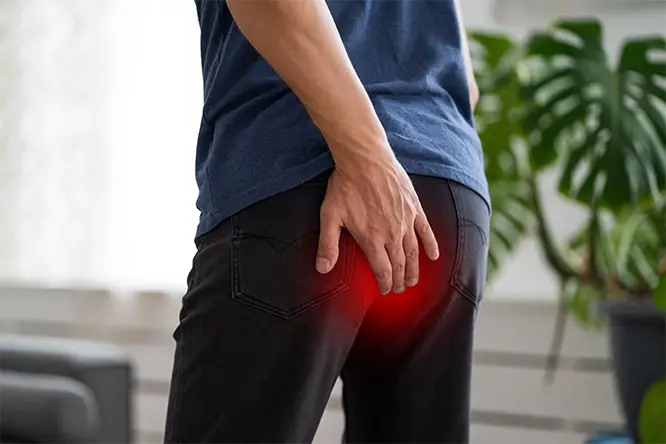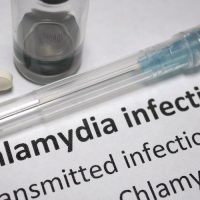
Haemorrhoids, or piles, involve swollen rectal and anal veins, leading to symptoms like discomfort, itching, and bleeding. For affected individuals, grasping the underlying causes, exploring diverse treatment methodologies, adopting effective coping mechanisms, and implementing significant lifestyle modifications are key steps towards managing this condition and enhancing the overall quality of life.
This comprehensive guide aims to provide a thorough overview of haemorrhoid management.
Causes Of Haemorrhoids
Haemorrhoids, a condition characterized by the swelling of veins in the lower rectum and anus, are primarily induced by increased pressure in these areas. The causative factors contributing to this pressure vary, encompassing lifestyle habits and physiological changes. These may include;
- Straining During Bowel Movements: Excessive force applied to expel stools can stress rectal veins.
- Prolonged Sitting: Extended periods of sitting, especially on the toilet, can heighten rectal vein pressure.
- Chronic Constipation or Diarrhea: Frequent, irregular bowel movements maintain constant pressure on rectal veins.
- Overweight: Excess body weight exerts additional pressure on pelvic and rectal veins.
- Pregnancy: During pregnancy, the expanding uterus presses against pelvic veins, increasing rectal pressure.
- Genetic Predisposition: In some cases, a hereditary factor may play a role in developing haemorrhoids.
These factors can individually or collectively contribute to the formation and exacerbation of haemorrhoids. Despite identifiable causes, the exact origin often remains elusive, challenging prevention and requiring a comprehensive management approach.
For individuals seeking specialized care, a visit to a haemorrhoid removal clinic can provide access to expert assessments and advanced treatment options tailored to their specific condition.
Diagnosis And Treatment
Diagnosing haemorrhoids is primarily conducted through a comprehensive physical examination by a healthcare professional. The process involves several steps to identify and assess the condition accurately:
- External Examination: The doctor inspects the anal region for visible signs of external haemorrhoids, which can present as swelling or bulging.
- Digital Rectal Examination (DRE): This involves the healthcare provider inserting a gloved, lubricated finger into the rectum to feel for abnormalities.
- Anoscopy: A small, tubular instrument called an anoscope is inserted into the rectum to provide a detailed view of the inside, helping identify internal haemorrhoids.
- Colonoscopy: For a more in-depth analysis, especially if there’s concern for colorectal issues beyond haemorrhoids, a colonoscopy may be advised.
Treatment strategies for haemorrhoids depend on their severity and whether they are internal or external. For instance, mild cases can be effectively managed with over-the-counter (OTC) products like creams, ointments, and suppositories that alleviate symptoms temporarily.
For situations where these treatments don’t yield satisfactory results, surgical procedures like haemorrhoidectomy (removal of the haemorrhoid) or stapled haemorrhoidopexy (repositioning of prolapsed haemorrhoids) might be considered. These options are generally reserved for the most severe cases.
Coping Strategies And Lifestyle Changes
Successfully managing haemorrhoids requires a holistic approach that incorporates both coping strategies and lifestyle changes. These adjustments are aimed at mitigating symptoms, enhancing comfort, and minimizing the chances of recurrence. Among the key modifications recommended are:
- Fiber Intake: Elevating dietary fiber intake can help soften stools, reducing the need to strain during bowel movements—a primary trigger for haemorrhoid development. Incorporate high-fiber foods into one’s diet, such as fruits, vegetables, whole grains, and legumes. They can significantly aid in achieving this goal.
- Hydration: Adequate fluid intake, particularly water, is essential for maintaining soft stool consistency and preventing constipation, a significant contributor to haemorrhoid issues. Aim for at least 8 glasses of water daily, adjusting based on activity level and climate.
- Exercise: Engaging in regular physical activity is vital for stimulating bowel function and preventing constipation that can exacerbate haemorrhoid problems. Activities can range from walking and cycling to vigorous exercises, depending on individual fitness levels and preferences.
- Bathroom Habits: Modifying bathroom habits can profoundly impact reducing haemorrhoid risk. This includes avoiding excessive straining and limiting time spent sitting on the toilet, as these behaviors can increase rectal vein pressure. Additionally, heeding the body’s natural call to defecate without delay can prevent stool from becoming hard and difficult to pass.
- Sitz Baths: The practice of taking sitz baths, where one sits in warm water covering the hips and buttocks, can provide considerable relief from haemorrhoid discomfort. This is particularly beneficial after bowel movements, as it can help soothe the affected area and reduce inflammation.
By integrating these coping mechanisms and lifestyle alterations, individuals can relieve the current symptoms associated with haemorrhoids and significantly reduce the likelihood of their recurrence, leading to improved overall well-being and comfort.
Medical Interventions
For individuals grappling with haemorrhoids, there are occasions when neither lifestyle adjustments nor over-the-counter remedies can provide adequate relief. In such scenarios, medical intervention becomes a necessity, especially when haemorrhoids can lead to significant pain, profuse bleeding, or prolapse (where haemorrhoids protrude outside the anal canal). Medical treatments for haemorrhoids range from minimally invasive techniques to comprehensive surgical solutions, aiming to provide relief and prevent complications.
Minimally invasive options are typically the initial approach for treating haemorrhoids due to their lower risk and quicker recovery times:
- Rubber Band Ligation: This procedure involves the application of a tight rubber band around the base of the haemorrhoid. This action obstructs the blood supply to the affected area, resulting in the haemorrhoid withering and eventually detaching from the body. It’s particularly effective for internal haemorrhoids that haven’t responded to conservative treatments.
- Sclerotherapy: In this method, a doctor injects a chemical solution directly into the haemorrhoid tissue. The solution induces a reaction that leads to the shrinking and subsequent retraction of the haemorrhoid. Sclerotherapy is often chosen for smaller haemorrhoids.
- Infrared Photocoagulation: This technique uses infrared light to apply controlled burns to the haemorrhoid tissue. The heat from the burns causes the tissue to form scars, which cut off the blood supply, causing the haemorrhoid to shrink. It’s used for small to medium-sized haemorrhoids.
Should these less invasive methods prove ineffective, or in cases of particularly large or troublesome haemorrhoids, surgical interventions may be necessary:
- Haemorrhoidectomy: This surgical procedure entails the complete removal of the haemorrhoid, including the surrounding affected tissue. It’s considered one of the most effective treatments for severe or recurrent haemorrhoids, offering long-term relief.
- Stapled Haemorrhoidopexy: Unlike a haemorrhoidectomy, this procedure doesn’t remove the haemorrhoid but instead repositions it back inside the rectum, cutting off its blood supply and securing it in place with a circular stapling device. This option is less painful than a haemorrhoidectomy and is used for prolapsed haemorrhoids.
These medical interventions are pivotal in managing severe haemorrhoid cases, offering patients a spectrum of solutions tailored to the severity and nature of their condition.
Preventive Measures
The prevention of haemorrhoids is largely achievable through a series of proactive lifestyle adjustments that target the reduction of risk factors associated with their onset. By focusing on dietary, physical, and habitual changes, individuals can significantly diminish the likelihood of developing haemorrhoids. These preventive measures are not only beneficial for avoiding haemorrhoids but also contribute to overall digestive and cardiovascular health.
Key preventive strategies include:
- Dietary Adjustments
Incorporating a diet rich in fiber is pivotal. Fiber can help soften stools, making bowel movements easier and reducing the need to strain. Recommended sources of high fiber include:
- Fruits: Apples, pears, berries, and bananas
- Vegetables: Leafy greens, carrots, and broccoli
- Whole Grains: Brown rice, oats, and whole wheat products
- Legumes: Beans, lentils, and peas
Moreover, adequate hydration is also essential to prevent haemorrhoids. Drinking enough water daily can help soften stools and promote healthy bowel movements. Other hydrating fluids, such as herbal teas, can also contribute to fluid intake.
- Regular Physical Activity
Engaging in regular exercise can help maintain bowel regularity and reduce the pressure on rectal and anal veins, which is a common cause of haemorrhoids. Activities can range from walking and swimming to more strenuous exercises, depending on individual fitness levels.
- Proper Bathroom Habits
Proper bathroom habits can also help prevent the risk of developing haemorrhoids. These may include:
- Timely Response to Bowel Urges: Ignoring the urge to have a bowel movement can result in harder stools and increased straining.
- Avoiding Prolonged Sitting on the Toilet: Spending too much time on the toilet, especially while straining, can increase pressure on the anal and rectal veins.
- Proper Positioning: Using a small stool to elevate the feet while sitting on the toilet can help align the rectum in a more natural position, facilitating easier bowel movements.
Adopting proper bathroom habits can significantly decrease the risk, promoting rectal health and overall well-being.
- Mindful Straining
Avoiding excessive straining during bowel movements is crucial as it puts additional pressure on the veins in the lower rectum, exacerbating the risk of haemorrhoids. By adhering to these preventive measures, individuals can lower their risk of developing haemorrhoids and enhance their overall gastrointestinal health. These lifestyle changes, when integrated into daily routines, can offer a robust defense against the formation of haemorrhoids and contribute to a healthier, more comfortable life.
Final Thoughts
Haemorrhoids, while common, can be a source of significant discomfort and impact the quality of life. Understanding the causes and available treatment options is essential for effective management.
Adopting healthy lifestyle changes, utilizing coping strategies for symptom relief, and seeking medical advice, when necessary, can help individuals manage their condition effectively. But for those experiencing persistent or severe symptoms, professional evaluation may provide the necessary interventions to alleviate discomfort and improve well-being.


